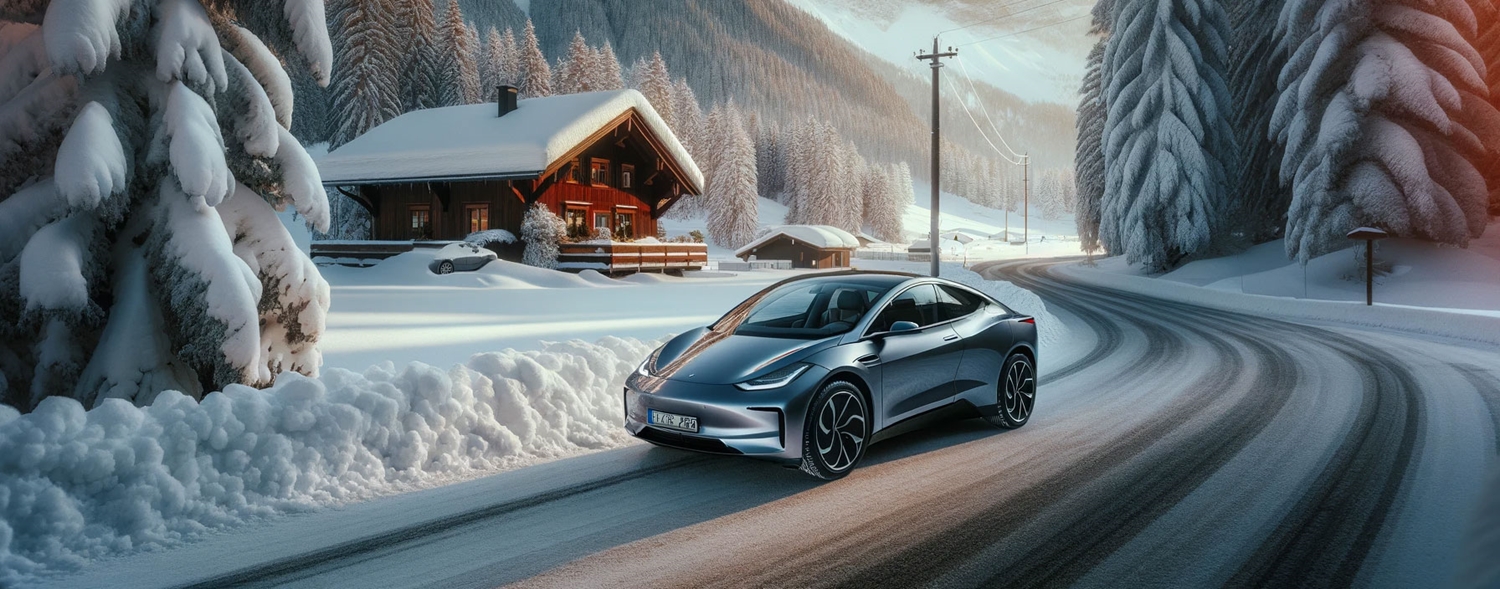Electric Vehicle (EV) Myths and Tips for Efficient Driving in Cold Climates
Electric Vehicles (EVs) are often surrounded by misconceptions, especially regarding their performance in cold weather. This article aims to debunk common myths and offer practical tips for efficient EV driving during colder months, ensuring an enjoyable and eco-friendly experience.
Debunking Common Myths
1. Reduced Range is Manageable: A prevalent myth is that EVs are less effective in cold climates due to reduced battery performance. While cold weather can indeed decrease battery efficiency, this impact is often overstated. Advanced EVs with heat pumps, are designed to perform well even in extreme temperatures.
2. Battery Durability in Cold: Another misconception is that cold weather significantly degrades battery life. EVs come with advanced battery management systems that maintain the battery at optimal temperatures, safeguarding their durability in cold climates. Keep your EV’s battery charged between 20% and 80%. This helps maintain battery health, especially in extreme temperatures.
3. Charging in Cold Weather: Contrary to the belief that EVs cannot be charged in cold conditions, they are indeed capable of charging in extreme cold. It's advisable, however, to preheat the battery before fast charging to improve efficiency and speed.
4. Cabin Heating Efficiency: Some people think EVs cannot adequately heat the cabin in extreme cold. However, newer EV models, including those equipped with heat pumps, provide efficient heating while minimizing energy usage.
5. Preconditioning Benefits: The idea that preconditioning (warming the EV while plugged in) is unnecessary and wasteful is a myth. Preconditioning conserves battery range by using grid power for heating, rather than draining the battery.
6. EV Stability in Snow: It's a common misbelief that EVs, being heavier, are more prone to skidding in snow. In reality, the lower centre of gravity in most EVs enhances stability and traction, making them less likely to skid.
Tips for Cold Weather EV Driving
1. Extra State of Charge (SoC): Plan with an additional charge in mind, as cold weather can impact battery efficiency. Also, as a safety measure if you get stuck in a queue or restricted access on the road. Driving at lower speeds reduces energy consumption, smooth acceleration and regenerative braking also conserve battery power.
2. Use Cabin and Battery Pre-Heating: Pre-heating improves battery efficiency and ensures a comfortable driving experience. For example, Tesla Model 3/Y can idle for up to 38 hours in cold weather, using about 2kW per hour for heating the cabin. The convenience of not having to scrape ice and snow off the windows is also a pleasant advantage.
3. Monitor Tire Pressure: Cold temperatures can affect tire pressure. Proper inflation is essential for maintaining efficiency and safety. Inflate the tyre when it’s cold and follow the manufacturer's recommended tyre pressure. If you have extra cargo in your car, you will need more air pressure.
4. Strategic Trip Planning: Plan your route considering charging stations and the potential need for DC fast charging. Pre-heating the battery before fast charging boosts efficiency.
Understanding the Vital Role of the 12V Battery in Electric Vehicles During Cold Weather and extended parking durations:
In an electric vehicle (EV), the 12V battery plays a crucial role similar to that in a conventional internal combustion engine (ICE) vehicle. It powers the electronics, lights, and other ancillary systems. However, its functioning and charging mechanism differ significantly in cold weather conditions and during extended periods of parking, such as at an airport.
Low Battery Charge in Cold Weather:
Cold temperatures can significantly impact the chemical processes within a 12V lead-acid battery, which is commonly used in both EVs and ICE vehicles. The cold slows down the chemical reactions, resulting in reduced efficiency and slower charging rates. In colder weather, the demand on the battery is higher due to increased use of lights, heating, and other electrical components. This can lead to a quicker depletion of the battery's charge.
Drain During Long Parking Periods:
Even when a car is turned off, some electronics, such as security systems or onboard computers, remain active and continue to draw power from the 12V battery. In an EV, the 12V battery is typically charged from the main high-voltage battery through a DC-DC converter. If the EV is parked for an extended period, especially in cold weather, and the state of charge (SoC) of the main battery is low, it may not be able to charge the 12V battery. This risk is exacerbated in cold conditions where the 12V battery is already under strain.
Advantage Over ICE Vehicles:
Unlike ICE vehicles, which cannot charge the 12V battery unless the engine is running, an EV can keep the 12V battery charged using its main battery, provided the main battery has sufficient charge. This feature reduces the risk of the 12V battery running flat during long parking periods, as long as the EV is parked with a sufficiently high SoC in the main battery.
Therefore, it's important for EV owners to ensure their vehicle's main battery has a good SoC, particularly when parking for extended periods in cold weather, to maintain the charge of the 12V battery and ensure reliable operation of the vehicle's electronic systems.
Driving an EV in cold climates is not only feasible but advantageous. By debunking common myths and following practical tips such as efficient battery management and pre-heating, EVs prove to be reliable, efficient, and enjoyable even in extreme temperatures. Proper care and planning enhance their performance and longevity, making them a practical choice for eco-conscious drivers in colder regions. And yes, there is a reason why we don't see hundreds of electric cars on the roadside with an empty battery.

